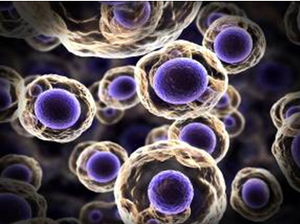Cell, tissue and gene therapy products or (CTGTPs) are often breakthrough therapies with immense potential in treating diseases with no cure or rare diseases with high treatment burdens. However, few of such therapies have been approved and some have been recalled due to safety issues. Now, a study published in GaBI Journal [1] has investigated these therapies and the manufacturing and regulatory challenges they pose.
Investigating cell, tissue and gene therapy products and their regulation
Biosimilars/Research
|
Posted 12/12/2022
 0
Post your comment
0
Post your comment

The review highlights that CTGTPs are intended for use in humans for curative, prophylactic, palliative or diagnostic purposes and target diseases that are managed by therapies with high treatment burdens. CTGTPs include the use of stem cells for regenerative purposes, the insertion of genes related to the production of specific proteins in gene therapies for cancer and rare disease treatment, and the engineering of components involving cells and tissue architectures to mend and restore organs and tissues in tissue therapy. CTGTPs are also known as advanced therapy medicinal products or regenerative medicines.
CTGTPs are not conventional biologicals and are derived directly from individual patients or donors. To be produced, e.g. cells, tissues are required, whereas for conventional biological medicines the focus is on producing specific protein products. As such, storage, transport and cryopreservation of CTGTPs in the manufacturing cycle are key as cells require extreme cryopreservation temperatures, and heterogeneity has to be managed if the therapy product is autologous (from the patient). As a result, when compared to general biologicals, far more stringent processes are required in the manufacturing of CTGTPs. It is noted that some solutions to the challenges encountered in manufacturing include ensuring appropriate accreditation of professionals handling CTGTPs, using automation and outsourcing to contract development and manufacturing organizations to ensure better compliance to good manufacturing practice (GMP) standards.
The review elaborates that a great need for development of specific regulations and regulatory frameworks related to CTGTPs. It outlines that challenges faced in the manufacturing and regulation of CTGTPs include quality assurance issues, lack of expertise and limitations in technology. Overall, a global convergence in regulation related to CTGTPs is needed through global harmonization of information related to these innovative therapies. However, as they continue to evolve, regulation needs to be dynamic and responsive to advances. It is suggested that, to ensure these therapies are accessible to patients and have global reach, there needs to be greater and more effective communication between regulators and different stakeholders such as manufacturers, with feedback and some degree of flexibility incorporated into regulations.
GaBI Journal Citation Impact
2.2 – CiteScore 2021 (calculated on 5 May 2022)
2.4 – CiteScoreTracker 2022 (Last updated on 6 December 2022)
Submit a manuscript to GaBI Journal
Related articles
Technological approaches to drug repurposing for cancer treatment
Biopharmaceuticals and biosimilars: manufacturing processes
FDA approves drug for cancers with specific biomarker
|
LATIN AMERICAN FORUM View the latest headline article: Directrices para la regulación de biológicos, biosimilares y radiofármacos en Brasil Browse the news in the Latin American Forum! Register to receive the GaBI Latin American Forum newsletter. Inform colleagues and friends of this new initiative.
FORO LATINOAMERICANO Ver el último artículo de cabecera: Directrices para la regulación de biológicos, biosimilares y radiofármacos en Brasil !Explore las noticias en el Foro Latinoamericano! Regístrese para recibir el boletín informativo GaBI Foro Latinoamericano. Informe a colegas y amigos sobre esta nueva iniciativa. |
Reference
1. Sia CH, Koh C, Chan LW. Manufacture and regulation of cell, tissue and gene therapy products: global perspectives, challenges and next steps. Generics and Biosimilars Initiative Journal (GaBI Journal). 2022;11(2):65-81. doi:10.5639/gabij.2022.1102.012
Permission granted to reproduce for personal and non-commercial use only. All other reproduction, copy or reprinting of all or part of any ‘Content’ found on this website is strictly prohibited without the prior consent of the publisher. Contact the publisher to obtain permission before redistributing.
Copyright – Unless otherwise stated all contents of this website are © 2022 Pro Pharma Communications International. All Rights Reserved.
General
Samsung Bioepis wins Pyzchiva case; Regeneron patent rulings threaten foreign biosimilars
Chinese biosimilars go global: growth, partnerships, and challenges
What is the future for the US biosimilar interchangeability designation

Biosimilars/Research Posted 05/06/2025
Biosimilar clinical efficacy studies: are they still necessary?

Biosimilars/Research Posted 27/05/2025
The best selling biotechnology drugs of 2008: the next biosimilars targets








Post your comment